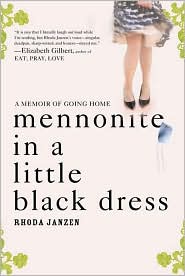This review contains affiliate links, which earn me a small commission when you click and purchase, at no extra cost to you. Thank you for supporting my small business and allowing me to continue providing you a reliable resource for clean book ratings.
In the early 1900s in a fishing village outside Busan, Korea, a man with a cleft palate and twisted foot and his wife have three sons, who die very young. They also have one daughter, who not only doesn’t have any deformities but survives and thrives. Sunja works hard with her parents to take care of their small home and lodgers, cooking and tending the garden and shopping in the market. When a wealthy man at the market takes notice of her, Sunja rejects his advances, but eventually he wears her down and she meets with him secretly. When she becomes pregnant, she learns he is married and has a family, so she breaks ties with him. A sickly young minister who had been staying for a short time at their home learns of her plight and offers to marry her. He is on his way to Japan to live with his brother and be an assistant pastor at a church in Osaka, so the two marry quietly and move to Japan to start a new life together.
So begins a multigenerational story of one family of ethnic Koreans who live their lives in Japan. Sunja has two sons, one with her lover, who turns out to be much more rich and powerful than she could have guessed as a girl, and one with her kind and loving husband. These two sons grow up as foreigners in Japan, even though they have never set foot in Korea.
I knew nothing about the history of Japan’s occupation of Korea in the early decades of the 20th century and the many Koreans who ended up living in Japan but were never accepted as citizens and were generally looked down on as less-than immigrants. The racial divide between these two groups of Asians was strong, and this discrimination affected the displaced Koreans through generations. I appreciated learning about this situation through various characters in Min Jin Lee’s book; I especially enjoyed reading the interview with her and her acknowledgments, in which she explains what she learned as a college student and later on living in Japan for a few years herself. She spoke with “dozens” of Koreans in Japan and said, while they “may have been historical victims, when I met them in person, none of them were as simple as that.” She said the the story that became Pachinko was with her for almost 30 years, and the time she spent writing and rewriting and rethinking as she learned more about the people who informed the novel was well invested. The evolution of one family, their struggles and strengths and weaknesses and the change they see and experience over decades, is explored well and given a chance to grow into a well-fleshed-out story that touches on various issues that real Koreans in Japan faced in the 20th century.
Rated: High. There are about two dozen uses of strong language, the numbers of which are more concentrated later in the book. Sexual content is moderate; there are sexual scenes here and there that are generally not very long but are moderately detailed. Adultery occurs; “hostessing” and drug use are alluded to. There is some violence but it’s fairly limited. Overall, the content felt stronger than it really needed to be; language and sexual content seemed like they could easily have been toned down and weren’t “necessary.” While I appreciated what I learned, I’d prefer not to have read it because of the content that got worse as the book progressed.
Click here to purchase your copy of Pachinko from Amazon.




